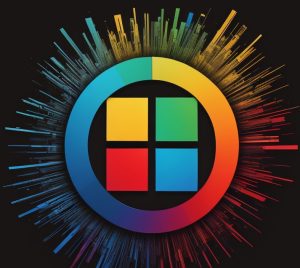
The era from Windows XP to Windows 7 was a key period in the development of Microsoft’s operating systems, marked by significant innovations and changes that affected the entire spectrum of computer use. This time period not only opened up new horizons in the capabilities of operating systems, but also showed how Microsoft responds to user needs. From introducing new standards of stability and security to revolutionizing the user interface, this era combines a leap in technological development and the growth of user experience that ultimately shaped the modern look of personal computers.
Windows XP
It was released in 2001 and marked a new stage in the evolution of Microsoft operating systems, combining the functionality and stability of previous versions for home and professional users. This version of the operating system was the embodiment of the merger of two separate Microsoft product lines – the line for home users (Windows 98, ME) and the line for professionals and businesses (Windows 2000).
The system provided a significant improvement in visual interface, stability, and security, becoming known for its reliability and high compatibility with various programs and hardware.
Thanks to its flexibility and extensive multimedia support, Windows XP quickly gained popularity among various categories of users, from home to business. Improvements in networking and security, along with a user-friendly interface, have made it the number one choice for many users for a long time, even after new versions of Windows were released.
Windows Vista
Vista, released in 2006, was Microsoft’s attempt to make a significant leap forward in the development of its operating systems. With its new Aero graphical user interface, Vista featured a visually appealing and modern design, offering enhanced effects and animations such as transparent windows and smooth transitions.
The main innovations of Vista were improvements in security and account management, including the introduction of user account control (UAC) to prevent unauthorized access to critical system settings. Significant improvements were also made to file search, system indexing, and support for network connections.
However, despite its innovations and visual appeal, Vista faced a number of problems, including high hardware requirements, problems with program and driver compatibility, which led to mixed reviews from both users and professionals. This prompted Microsoft to develop further updates and release the next Windows 7, which fixed many of Vista’s shortcomings and was much better received by users.
Windows 7
The well-known Windows 7, introduced in 2009, quickly became one of the most successful and popular versions of Windows, as it effectively solved many of the problems that arose with Windows Vista. It was perceived as a significant improvement over its predecessor, providing users with a more stable, fast, and user-friendly operating system.
Windows 7 focuses on improving performance and user experience. This version included an improved taskbar with the ability to pin programs, improved file search, and a new library feature that simplified file and folder management.
One of the key features of Windows 7 was support for touch screens, reflecting the growing popularity of touch technology at the time. The system also offered improved security capabilities, including a more effective firewall and enhanced user account control.
Windows 7 was also more compatible with a wide variety of hardware and applications, making it easier for users to migrate from previous versions of Windows. Its intuitive interface and improved performance have resulted in a high level of user satisfaction.
As a result, Windows 7 was recognized for its reliability, functionality, and usability, becoming one of the most respected and widely used versions of Windows at the time.
Microsoft’s progression from Windows XP to Windows 7 reflects an important evolution in the way it approaches the design and functionality of operating systems. This period was characterized by a focus on stability, security, and user experience, which strengthened confidence in Windows as a reliable and convenient platform for everyday use.

